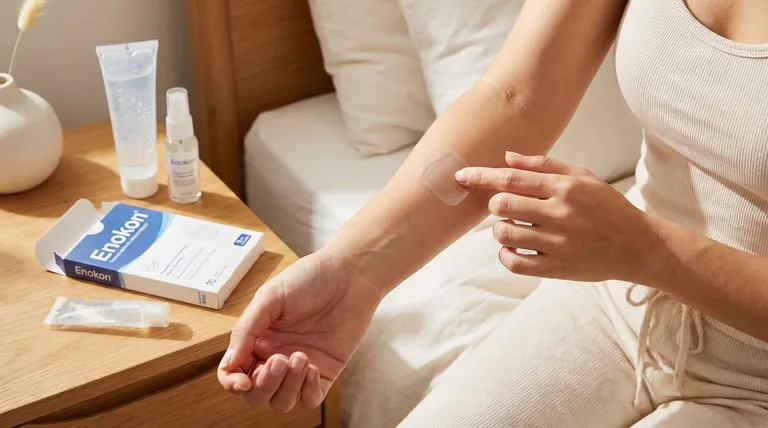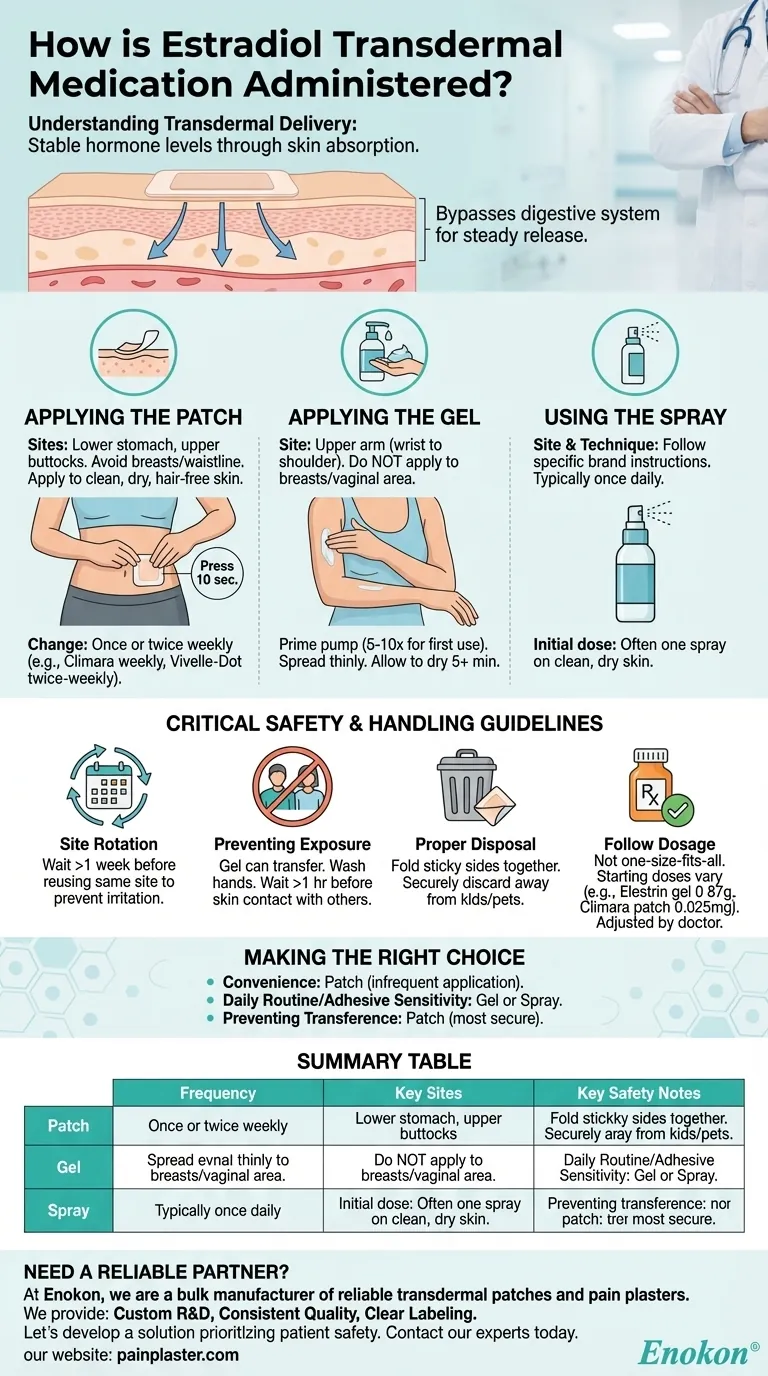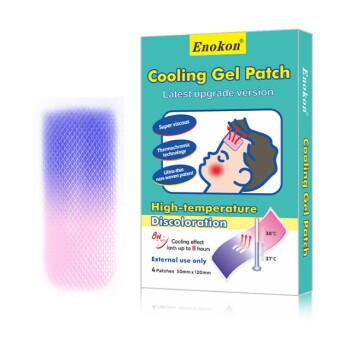To administer transdermal estradiol, you apply it directly to the skin as a patch, gel, or spray, allowing the hormone to be absorbed into your bloodstream. Each form has a specific application protocol that must be followed precisely to ensure a correct and consistent dose. For example, patches are applied to the lower stomach or buttocks, while gels are typically applied to the upper arm.
The core principle of transdermal estradiol is to achieve stable hormone levels by absorbing medication through the skin. However, the effectiveness and safety of your treatment depend entirely on correct application, including proper site selection, skin preparation, and preventing accidental exposure to others.

Understanding Transdermal Delivery
How It Works
Transdermal administration means the medication passes through the skin to enter the bloodstream.
This method bypasses the digestive system, allowing for a steady, controlled release of the hormone over time. It works by modulating the pituitary gland's secretions of key hormones, like LH and FSH, through a negative feedback mechanism.
Step-by-Step Application Guide
Applying the Estradiol Patch
The patch should be applied to clean, dry, and hair-free skin.
Ideal locations are the lower stomach (abdomen) or the upper buttocks. Avoid the breasts, waistline where clothing might rub it off, or any skin that is irritated, oily, or broken.
Press the patch firmly in place with your palm for about 10 seconds to ensure the edges are sealed.
Patches are typically changed once or twice per week, depending on the brand (e.g., Climara is weekly, Vivelle-Dot is twice-weekly).
Applying the Estradiol Gel
The gel is usually applied once daily to clean, dry skin on one arm.
Before the first use, you may need to prime the pump by pressing it 5-10 times. Spread the prescribed amount of gel thinly over the entire surface of one upper arm, from the wrist to the shoulder.
Do not apply the gel to the breasts or around the vaginal area.
Allow the gel to dry for at least 5 minutes before getting dressed to prevent it from rubbing off.
Using the Estradiol Spray
The spray is also typically a once-daily application.
The initial dose is often one spray applied to a clean, dry area of skin. Always follow the specific instructions provided by your pharmacist, as the application site and technique can vary by brand.
Critical Safety and Handling Guidelines
The Importance of Site Rotation
When applying a new patch, always choose a different spot from the one you just used.
You should wait at least one week before reusing the same application site. This practice helps prevent skin irritation and ensures consistent absorption of the medication.
Preventing Accidental Exposure to Others
The estradiol gel can transfer to other people through skin-to-skin contact.
After applying the gel, wash your hands thoroughly with soap and water. You must wait for the application site to dry completely and avoid skin contact with others for at least one hour after application.
Proper Disposal
Used patches still contain active medication and must be disposed of carefully.
Fold the used patch in half so the sticky sides press together, and discard it in a secure trash receptacle away from children and pets.
Follow Your Prescribed Dosage
The dosage for transdermal estradiol is not one-size-fits-all and will be determined by your doctor.
Starting doses vary (e.g., Elestrin gel at 0.87g daily, Climara patch at 0.025mg weekly). Your dosage will be adjusted based on your needs, and this medication is not recommended for children.
Making the Right Choice for Your Goal
- If your primary focus is convenience and infrequent application: The patch, which is only changed once or twice a week, is an excellent choice.
- If your primary focus is a daily routine and you have adhesive sensitivities: The gel or spray can be easily incorporated into your daily habits without the need for an adhesive.
- If your primary concern is preventing transference to others: The patch is the most secure option, as the medication is contained within the patch and does not pose a risk of skin-to-skin transfer once applied.
Proper administration is the key to achieving the consistent, therapeutic benefits of your prescribed estradiol treatment.
Summary Table:
| Application Method | Frequency | Key Application Sites | Key Safety Notes |
|---|---|---|---|
| Patch | Once or twice weekly | Lower abdomen, upper buttocks | Press firmly for 10 sec; rotate sites; fold used patch for disposal |
| Gel | Once daily | Upper arm (wrist to shoulder) | Let dry 5+ min; wash hands; avoid skin contact with others for 1 hour |
| Spray | Once daily | As per brand instructions (clean, dry skin) | Follow specific pharmacist instructions carefully |
Need a reliable partner for your transdermal medication?
Proper administration is crucial for patient safety and treatment efficacy. At Enokon, we are a bulk manufacturer of reliable transdermal patches and pain plasters for healthcare and pharmaceutical distributors and brands.
We can help you ensure your patients apply their medication correctly by providing:
- Custom R&D: Our technical expertise allows us to develop patches, gels, and sprays with user-friendly application features.
- Consistent Quality: Benefit from our manufacturing precision to deliver a consistent and reliable dose in every unit.
- Clear Labeling: We can work with you to create packaging and instructions that minimize user error.
Let's develop a transdermal solution that prioritizes patient safety and ease of use.
Contact our experts today for a consultation
Visual Guide

Related Products
- Far Infrared Heat Pain Relief Patches Transdermal Patches
- Far Infrared Deep Heat Relief Patches Medicated Pain Relief Patches
- Capsaicin Chili Medicated Pain Relief Patches
- Heating Pain Relief Patches for Menstrual Cramps
- Far Infrared Pain Patch Relief Pain Reliever for Back
People Also Ask
- How does capsaicin work in the medicated heat patch? The Science Behind Pain Relief
- What are the key features of the Deep Heat Pain Relief Back Patch? Get Up to 16 Hours of Drug-Free Relief
- How quickly does the Deep Heat Pain Relief Back Patch activate and how long does it provide warmth? Get 16-Hour Relief
- Are heat patches safe for all body parts? Key Safety Zones and No-Go Areas Explained
- What did the UK Million Women Study find regarding transdermal versus oral hormone therapy? A Safer Choice for Gallbladder Health
















